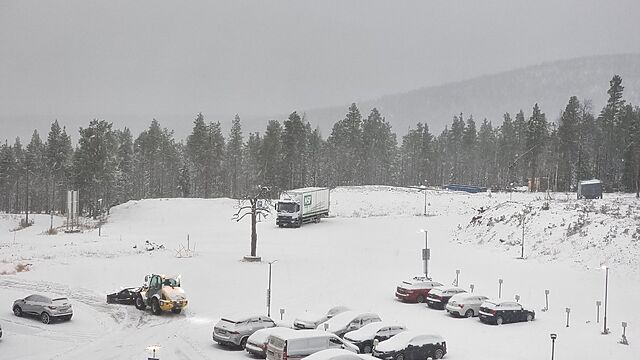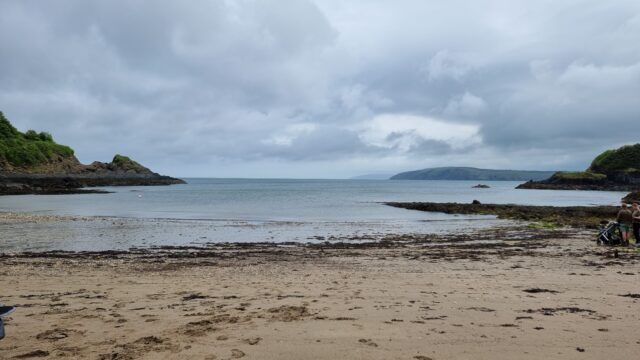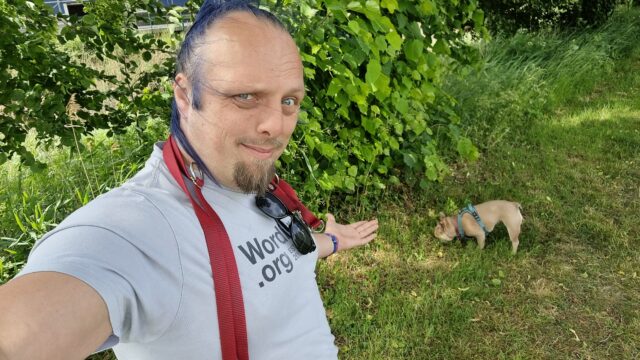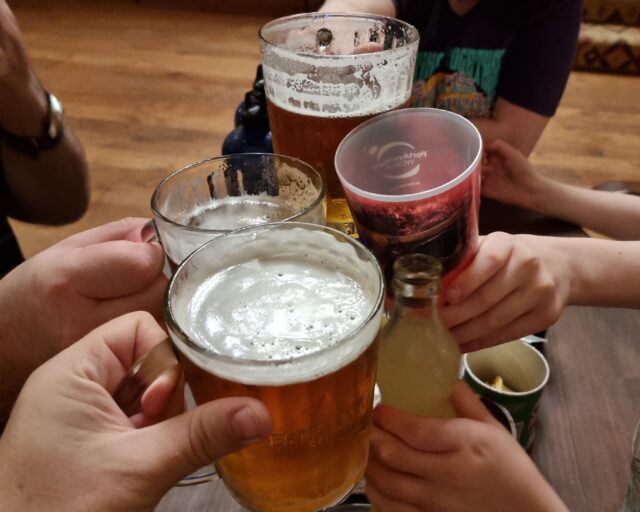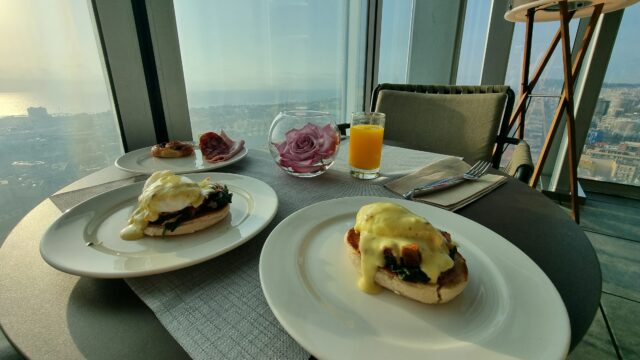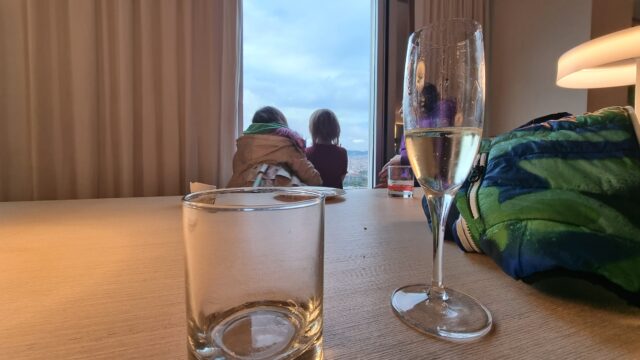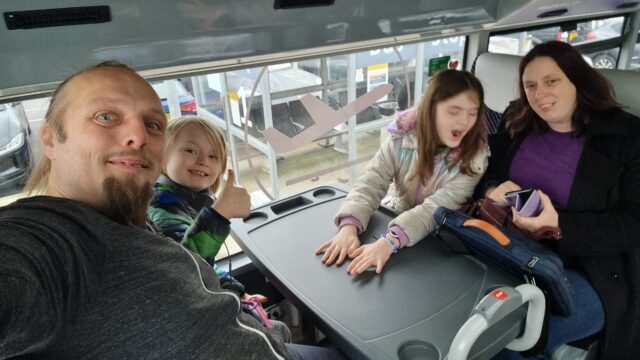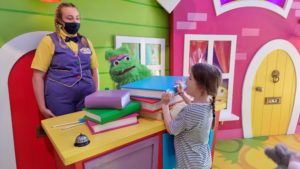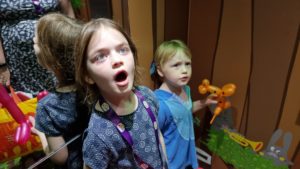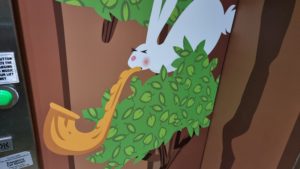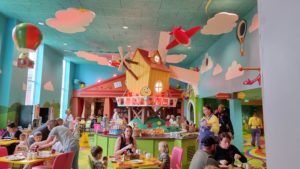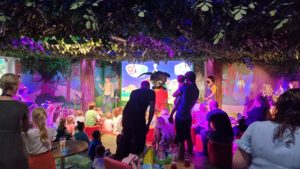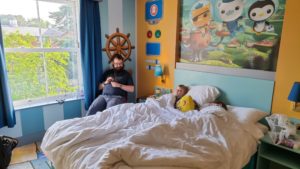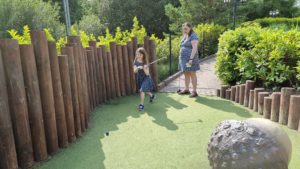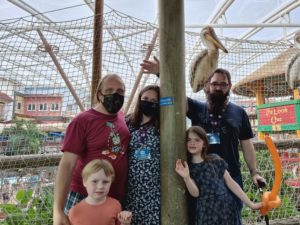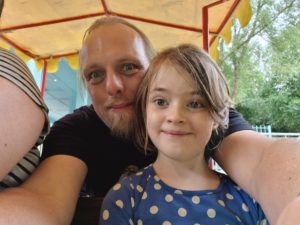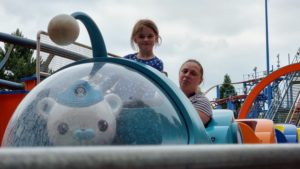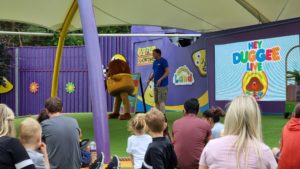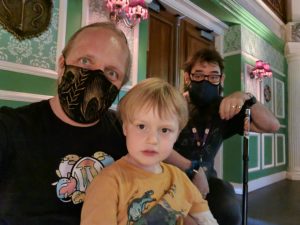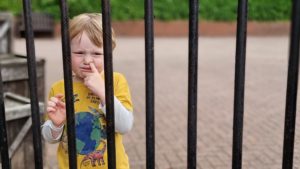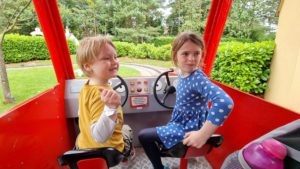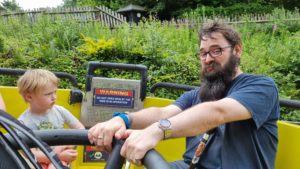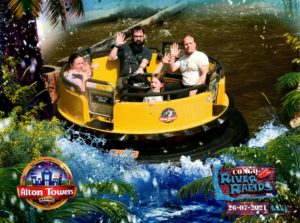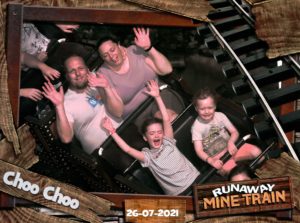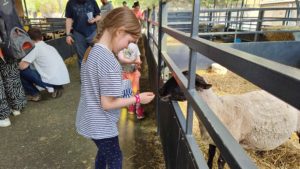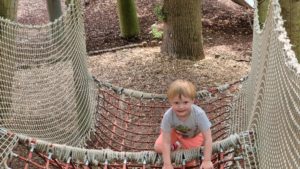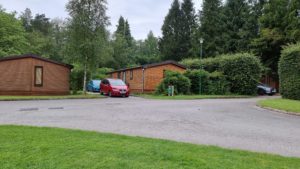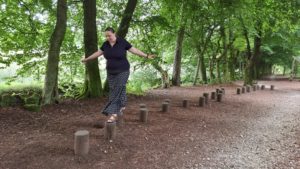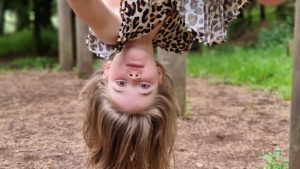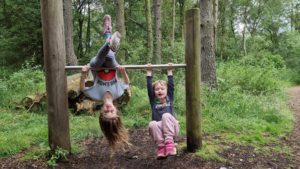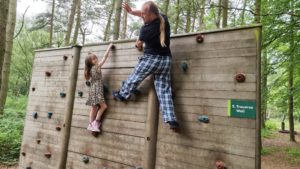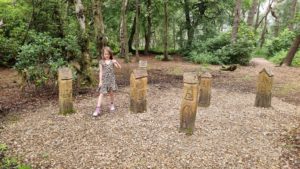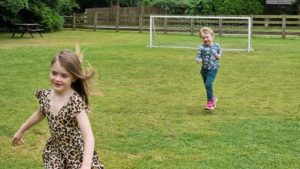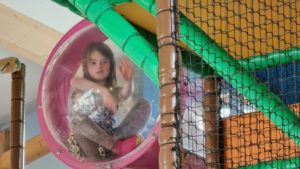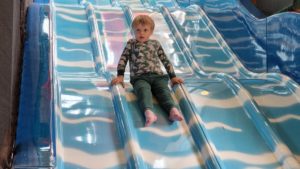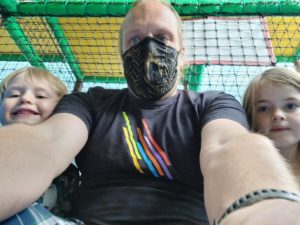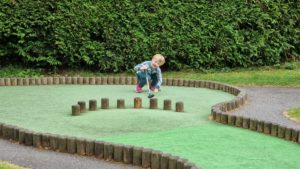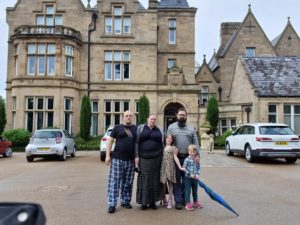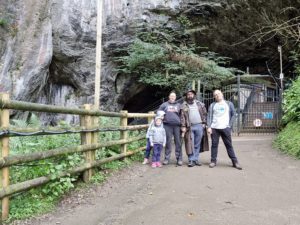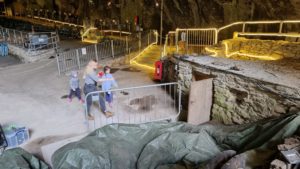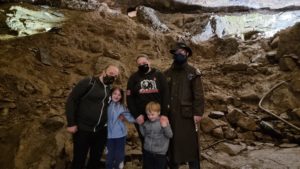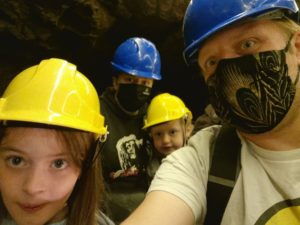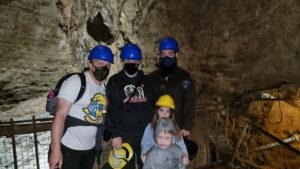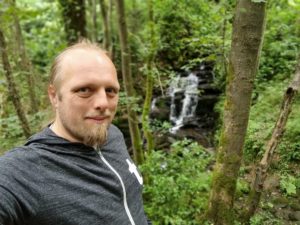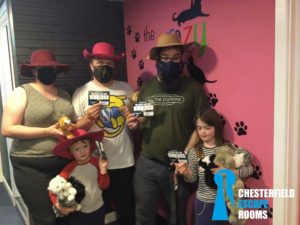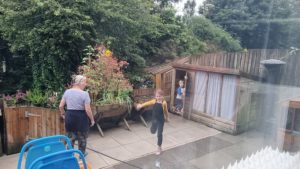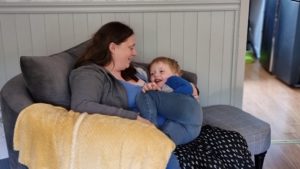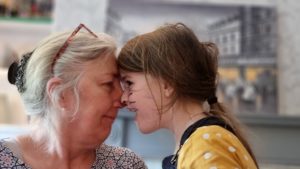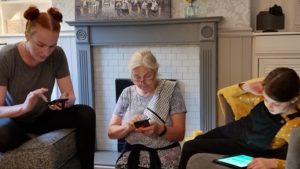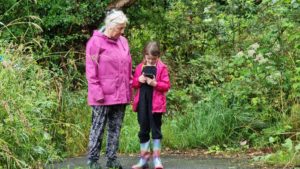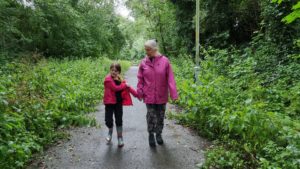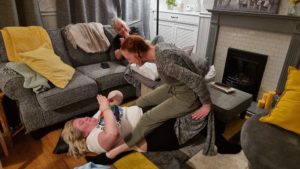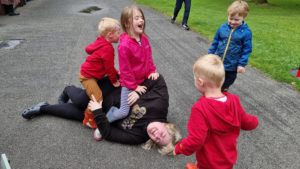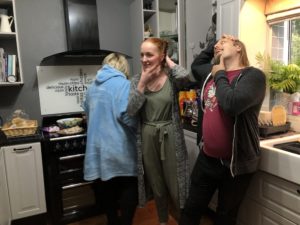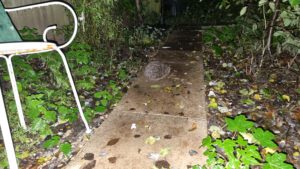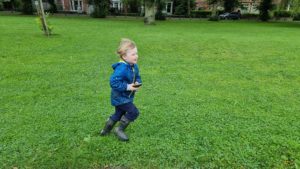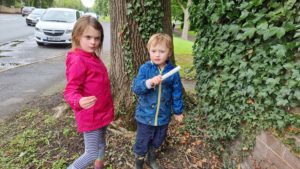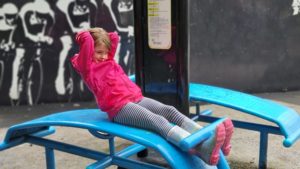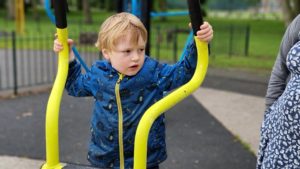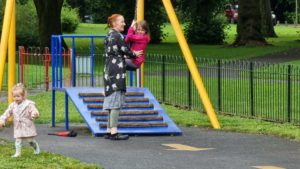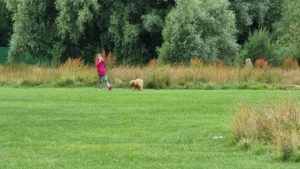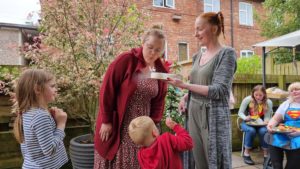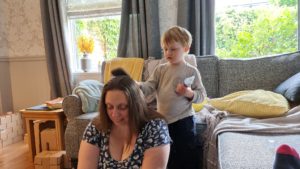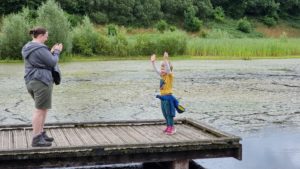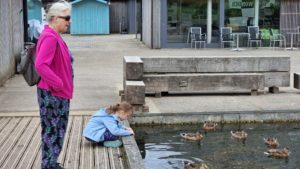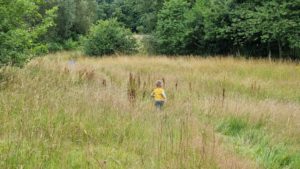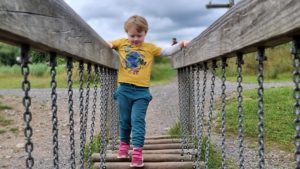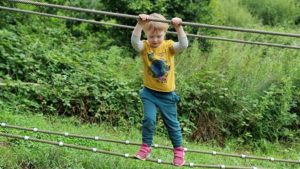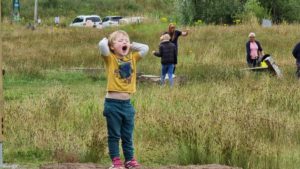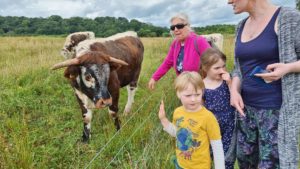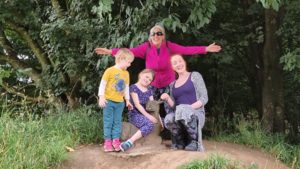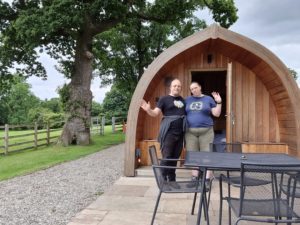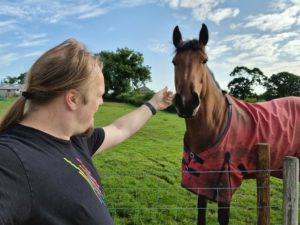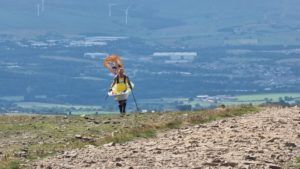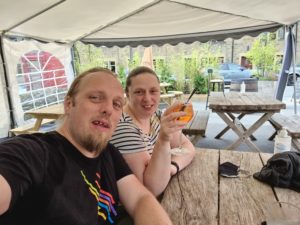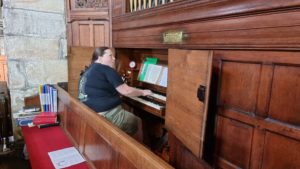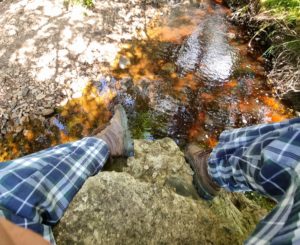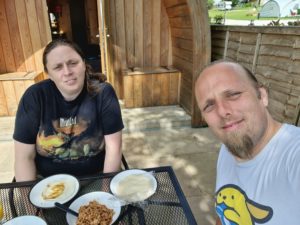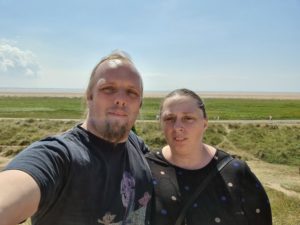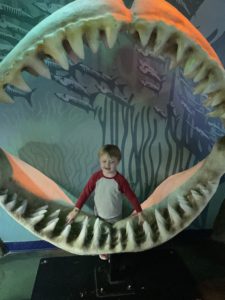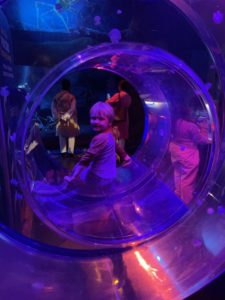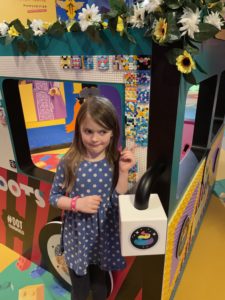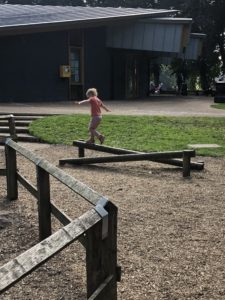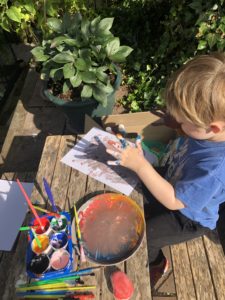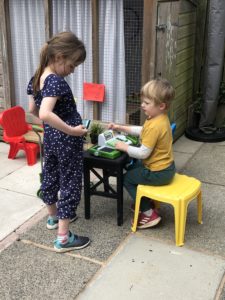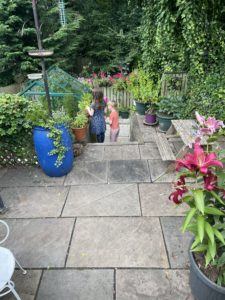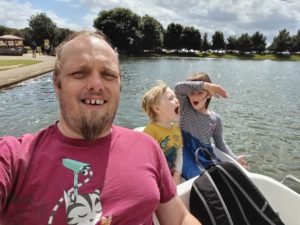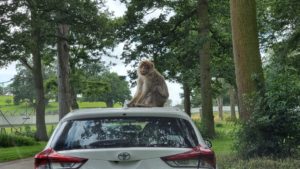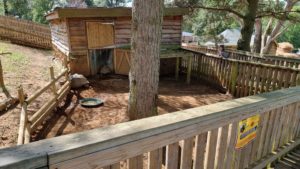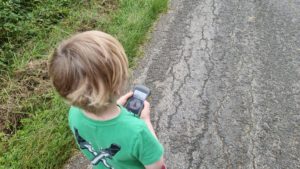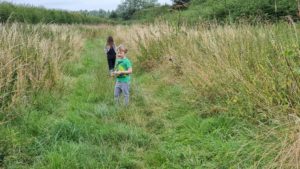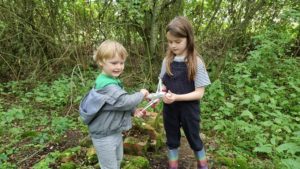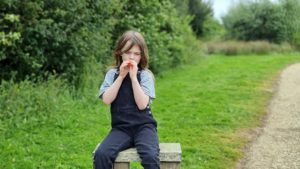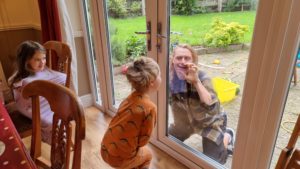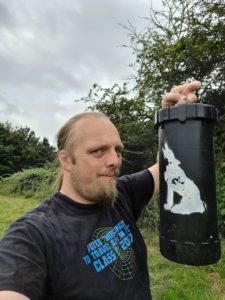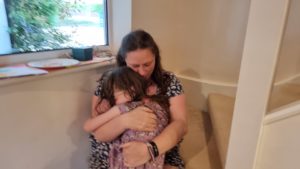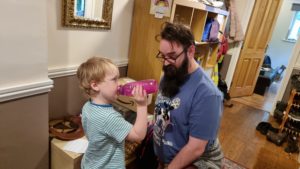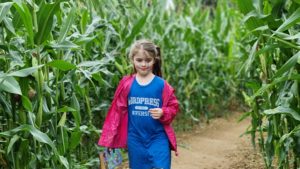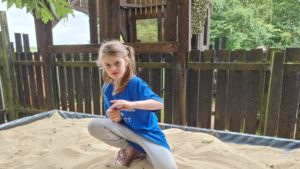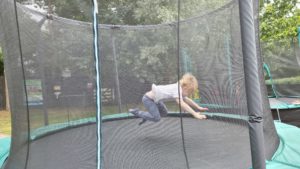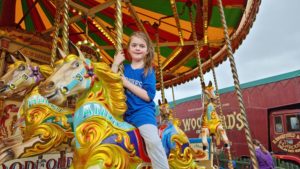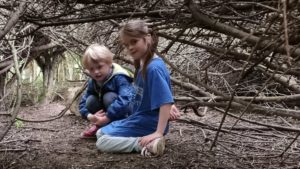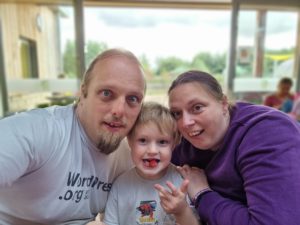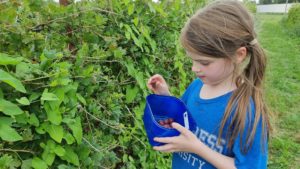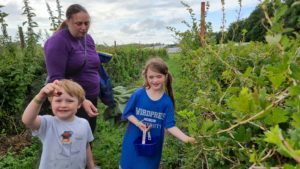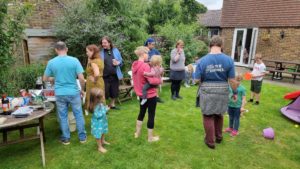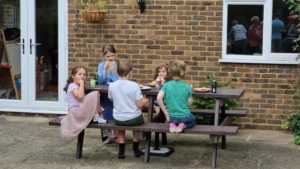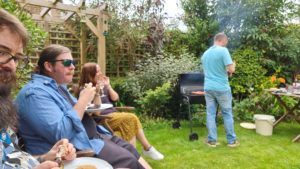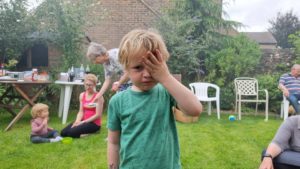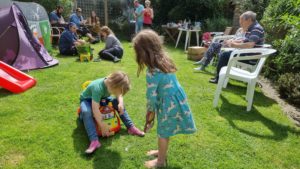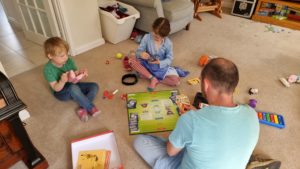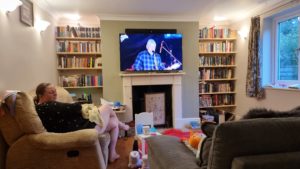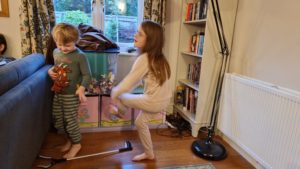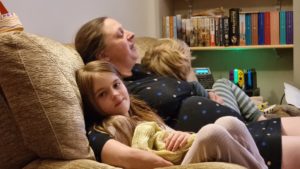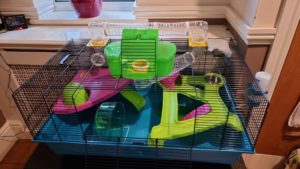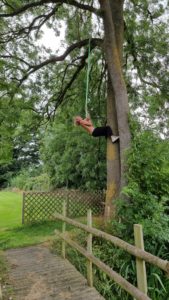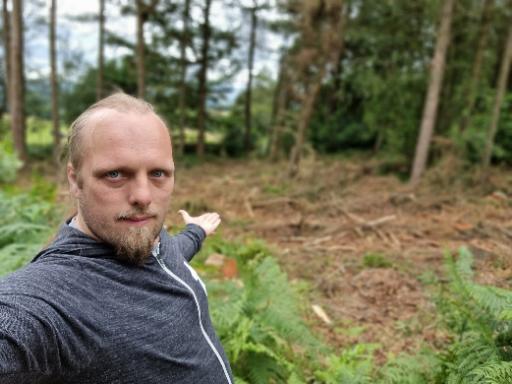Good morning Lapland!
Tag: holiday
Note #26629
Note #26625
PortAventura
Dos Huevos
Hackaday
Melià Barcelona Sky
Note #24813
Freedom of the Mountain
During a family holiday last week to the Three Valleys region of the French Alps for some skiing1, I came to see that I enjoy a privilege I call the freedom of the mountain.

The Freedom
The freedom of the mountain is a privilege that comes from having the level of experience necessary to take on virtually any run a resort has to offer. It provides a handful of benefits denied to less-confident skiers:
- I usually don’t feed to look at a map to plan my next route; whichever way I go will be fine!
- When I reach one or more lifts, I can choose which to take based on the length of their queue, rather than considering their destinations.
- When faced with a choice of pistes (or an off-piste route), my choice can be based on my mood, how crowded they are, etc., rather than their rated difficulty.
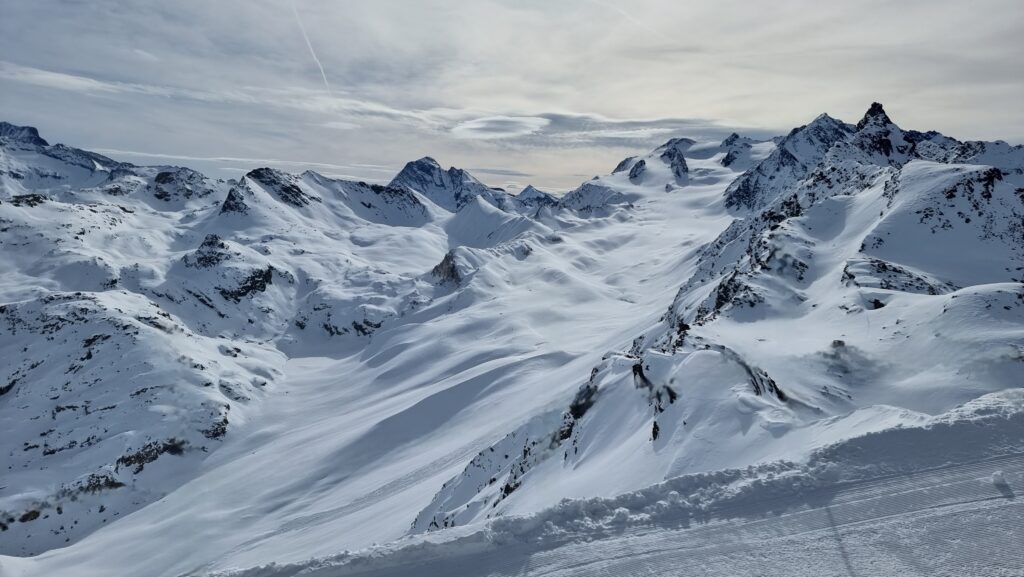
The downside is that I’m less well-equipped to consider the needs of others! Out skiing with Ruth one morning I suggested a route back into town that “felt easy” based on my previous runs, only to have her tell me that – according to the map – it probably wasn’t!
Approaching the Peak
The kids spent the week in lessons. It’s paying off: they’re both improving fast, and the eldest has got all the essentials down and it’s working on improving her parallel turns and on “reading the mountain”. It’s absolutely possible that the eldest, and perhaps both of them, will be a better skier than me someday2.
Maybe, as part of my effort to do what I’m bad at, I should have another go at learning to snowboard. I always found snowboarding frustrating because everything I needed to re-learn was something that I could already do much better and easier on skis. But perhaps if I can reframe that frustration through the lens of learning itself as the destination, I might be in a better place. One to consider for next time I hit the piste.
Footnotes
1 Also a little geocaching and some mountainside Where’s Wally?
2 Assuming snow is still a thing in ten years time.
Short-Term Blogging
There’s a perception that a blog is a long-lived, ongoing thing. That it lives with and alongside its author.1
But that doesn’t have to be true, and I think a lot of people could benefit from “short-term” blogging. Consider:
-
Photoblogging your holiday, rather than posting snaps to social media
You gain the ability to add context, crosslinking, and have permanent addresses (rather than losing eveything to the depths of a feed). You can crosspost/syndicate to your favourite socials if that’s your poison..

-
Blogging your studies, rather than keeping your notes to yourself
Writing what you learn helps you remember it; writing what you learn in a public space helps others learn too and makes it easy to search for your discoveries later.2 -
Recording your roleplaying, rather than just summarising each session to your fellow players
My D&D group does this at levellers.blog! That site won’t continue to be updated forever – the party will someday retire or, more-likely, come to a glorious but horrific end – but it’ll always live on as a reminder of what we achieved.
One of my favourite examples of such a blog was 52 Reflect3 (now integrated into its successor The Improbable Blog). For 52 consecutive weeks my partner‘s brother Robin blogged about adventures that took him out of his home in London and it was amazing. The project’s finished, but a blog was absolutely the right medium for it because now it’s got a “forever home” on the Web (imagine if he’d posted instead to Twitter, only for that platform to turn into a flaming turd).
I don’t often shill for my employer, but I genuinely believe that the free tier on WordPress.com is an excellent way to give a forever home to your short-term blog4. Did you know that you can type new.blog (or blog.new; both work!) into your browser to start one?
What are you going to write about?
Footnotes
1 This blog is, of course, an example of a long-term blog. It’s been going in some form or another for over half my life, and I don’t see that changing. But it’s not the only kind of blog.
2 Personally, I really love the serendipity of asking a web search engine for the solution to a problem and finding a result that turns out to be something that I myself wrote, long ago!
3 My previous posts about 52 Reflect: Challenge Robin, Twatt, Brixton to Brighton by Boris Bike, Ending on a High (and associated photo/note)
4 One of my favourite features of WordPress.com is the fact that it’s built atop the world’s most-popular blogging software and you can export all your data at any time, so there’s absolutely no lock-in: if you want to migrate to a competitor or even host your own blog, it’s really easy to do so!
Holidays in the Age of COVID
We’ve missed out on or delayed a number of trips and holidays over the last year and a half for, you know, pandemic-related reasons. So this summer, in addition to our trip to Lichfield, we arranged a series of back-to-back expeditions.
1. Alton Towers
The first leg of our holiday saw us spend a long weekend at Alton Towers, staying over at one of their themed hotels in between days at the water park and theme park:
2. Darwin Forest
The second leg of our holiday took us to a log cabin in the Darwin Forest Country Park for a week:
3. Preston
Kicking off the second week of our holiday, we crossed the Pennines to Preston to hang out with my family (with the exception of JTA, who had work to do back in Oxfordshire that he needed to return to):
4. Forest of Bowland
Ruth and I then left the kids with my mother and sisters for a few days to take an “anniversary mini-break” of glamping in the gorgeous Forest of Bowland:
(If you’re interested in Steve Taylor’s bathtub-carrying virtual-Everest expedition, here’s his Facebook page and JustGiving profile.)
5. Meanwhile, in Preston
The children, back in Preston, were apparently having a whale of a time:
6. Suddenly, A Ping
The plan from this point was simple: Ruth and I would return to Preston for a few days, hang out with my family some more, and eventually make a leisurely return to Oxfordshire. But it wasn’t to be…

I got a “ping”. What that means is that my phone was in close proximity to somebody else’s phone on 29 August and that other person subsequently tested positive for COVID-19.
My risk from this contact is exceptionally low. There’s only one place that my phone was in close proximity to the phone of anybody else outside of my immediate family, that day, and it’s when I left it in a locker at the swimming pool near our cabin in the Darwin Forest. Also, of course, I’d been double-jabbed for a month and a half and I’m more-cautious than most about contact, distance, mask usage etc. But my family are, for their own (good) reasons, more-cautious still, so self-isolating at Preston didn’t look like a possibility for us.
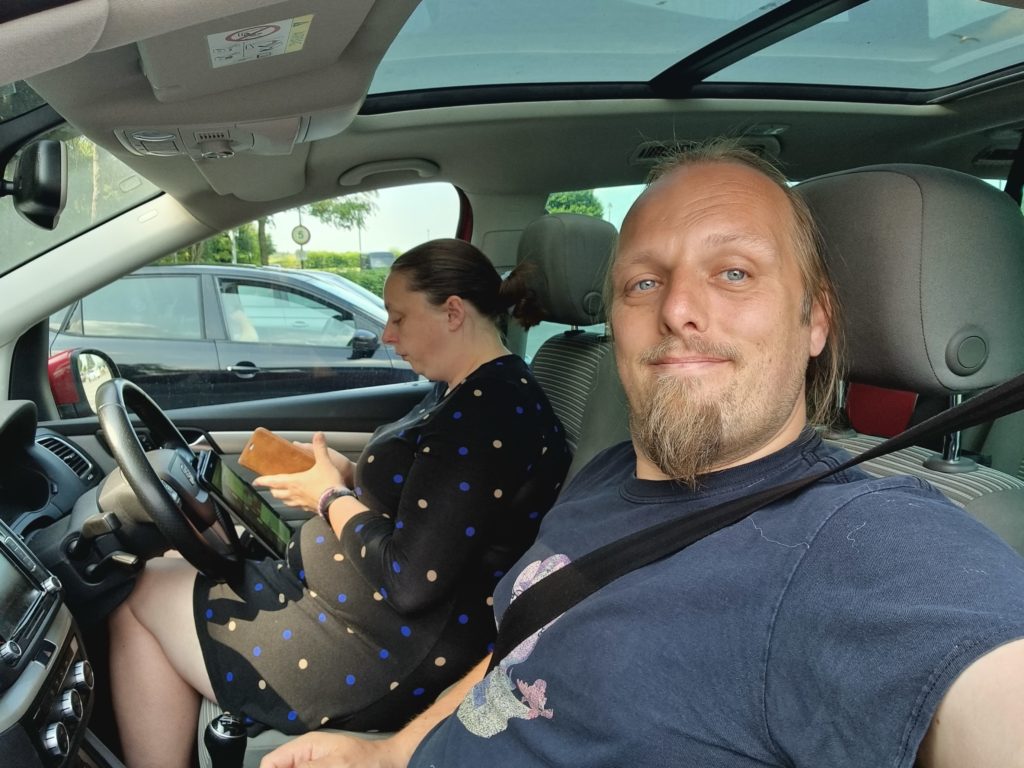
As soon as I got the notification we redirected to the nearest testing facility and both got swabs done. 8 days after possible exposure we ought to have a detectable viral load, if we’ve been infected. But, of course, the tests take a day or so to process, so we still needed to do a socially-distanced pickup of the kids and all their stuff from Preston and turn tail for Oxfordshire immediately, cutting our trip short.
The results would turn up negative, and subsequent tests would confirm that the “ping” was a false positive. And in an ironic twist, heading straight home actually put us closer to an actual COVID case as Ruth’s brother Owen turned out to have contracted the bug at almost exactly the same time and had, while we’d been travelling down the motorway, been working on isolating himself in an annex of the “North wing” of our house for the duration of his quarantine.
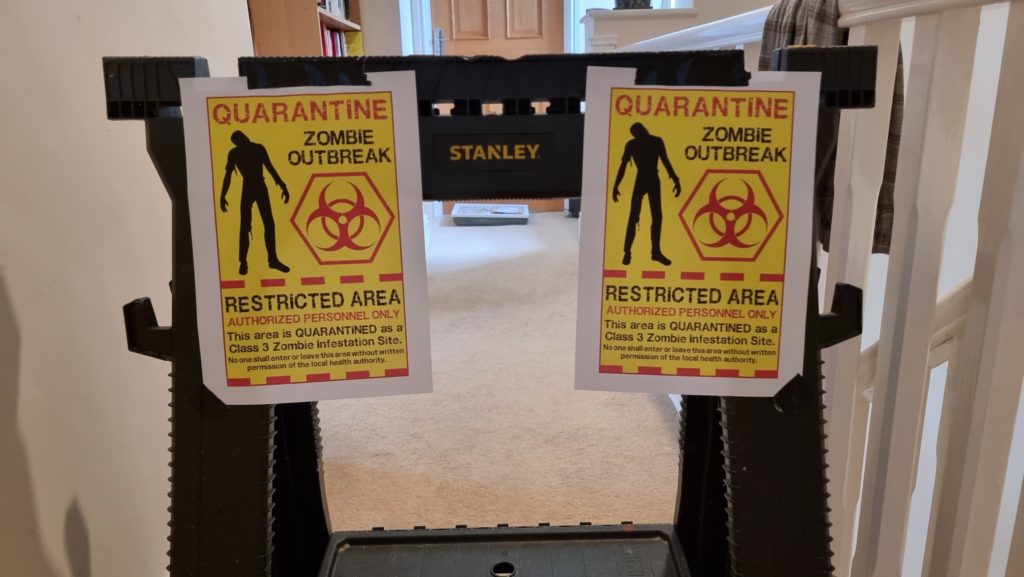
7. Ruth & JTA go to Berwick
Thanks to negative tests and quick action in quarantining Owen, Ruth and JTA were still able to undertake the next part of this three-week holiday period and take their anniversary break (which technically should be later in the year, but who knows what the situation will be by then?) to Berwick-upon-Tweed. That’s their story to tell, if they want to, but the kids and I had fun in their absence:
8. Reunited again
Finally, Ruth and JTA returned from their mini-break and we got to do a few things together as a family again before our extended holiday drew to a close:
9. Back to work?
Tomorrow I’m back at work, and after 23 days “off” I’m honestly not sure I remember what I do for a living any more. Something to do with the Internet, right? Maybe ecommerce?
I’m sure it’ll all come right back to me, at least by the time I’ve read through all the messages and notifications that doubtless await me (I’ve been especially good at the discipline, this break, of not looking at work notifications while I’ve been on holiday; I’m pretty proud of myself.)
But looking back, it’s been a hell of a three weeks. After a year and a half of being pretty-well confined to one place, doing a “grand tour” of so many destinations as a family and getting to do so many new and exciting things has made the break feel even longer than it was. It seems like it must have been months since I last had a Zoom meeting with a work colleague!
For now, though, it’s time to try to get the old brain back into work mode and get back to making the Web a better place!
Dan Q found GC1HW0N Penhul Hyll
This checkin to GC1HW0N Penhul Hyll reflects a geocaching.com log entry. See more of Dan's cache logs.
My partner fleeblewidget and I are celebrating 14 years together as a couple with a glamping holiday near Sawley and took the opportunity to climb up Pendle Hill this morning. I’ve many fond memories of taking this route with my father, when he was alive, and it’s interesting to be able to see how, just on the timescales of my own life, the shape of this hillside has changed owing to smaller landslides. Lower down, for example, human-caused erosion (picture attached) has damaged our destroyed paths I used to take, and new fences encourage climbers onto alternative routes. We also observed evidence (picture attached) of an older landslide, with a cliff of relatively new earth exposed where there clearly used to be a grassy/rocky slope.
Views were very good today and we could just about make out what we assume is the Ribble estuary in the distance from near the summit. A great and enjoyable expedition. Picture of the two of us at the trig point attached. TFTC.
Dan Q found GC56V1D U P 6
This checkin to GC56V1D U P 6 reflects a geocaching.com log entry. See more of Dan's cache logs.
My partner fleeblewidget and I are glamping up near Sawley to celebrate our 14th anniversary and came out today for a walk up Pendle Hill. Cache container was in the third place we looked; a nice easy find! Log a little damp but usable. TFTC.
Dan Q found GC46ZR0 B-by-B 3 feet and rising
This checkin to GC46ZR0 B-by-B 3 feet and rising reflects a geocaching.com log entry. See more of Dan's cache logs.
My partner fleeblewidget and I are staying at nearby Calder Farm to celebrate our anniversary and took a walk this afternoon to find this cache. Only around 300m as the crow flies from the GZ we figured this would be a quick expedition, but there’s no convenient path down to the riverside from where we are. Our first attempt at an approach took us to the North end of the footpath, but this seems to be through a garden centre/nursery that’s closed, and we couldn’t confirm whether or not the public footpath was open “through” or despite this, so we doubled go past our accommodation and approached from the South instead, ultimately resulting in a ~2km walk to and from the GZ!
Coordinates seemed off by about 5m based on my GPSr and phone, but the hint pointed us towards the obvious candidate and the cache was easily visible (although a bit of a stretch to reach!). Log had been inserted deep into the tube rather than the lid of the container and we struggled to extract it but got there in the end (we put it back in the lid for the benefit of the next cacher). TFTC.
Dan Q found GC1Y6GZ One Giant Step
This checkin to GC1Y6GZ One Giant Step reflects a geocaching.com log entry. See more of Dan's cache logs.
Greetings from Oxfordshire! I’m staying in the holiday park just East of here as part of the first of a three week holiday (taken in an attempt to “make up” for holidays cancelled over the last year and a half owing to The Situation). I figured it’d be an easy and relatively direct hike from there to here, but I’d not counted on the work underway at the moment by the Forestry Commission! Several diverted footpaths later I finally found this “giant step”! Took Paul the Seahorse TB, SL, TFTC.
